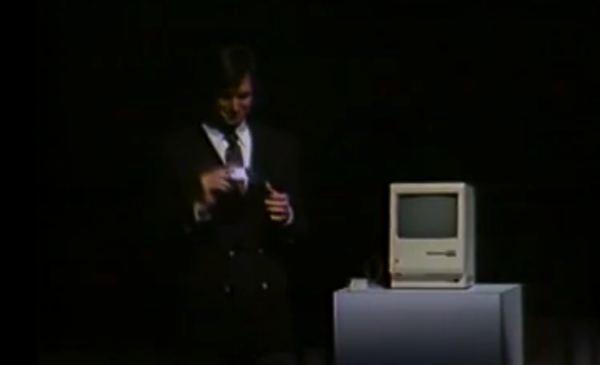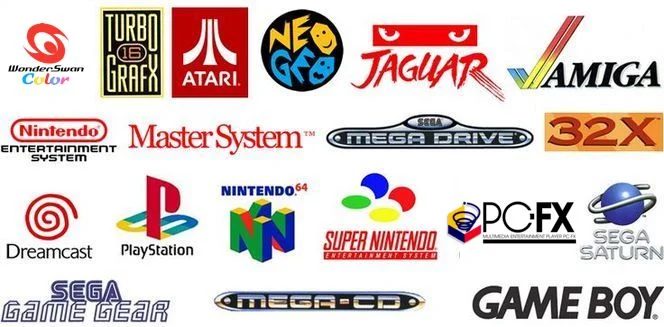
Boston Computer Society Founder Shares Details of the Very First ‘Stevenote’ in 1984

Three days ago Apple celebrated the 30th anniversary of the Macintosh and yesterday we saw footage of Steve Jobs unveiling the Macintosh publicly for the first time ever at a Boston Computer Society meeting, in 1984.
The founder of the BCS, Jonathan Rotenberg has shared some historical context of that famous evening, in a guest post over at the Computer History Museum, where archival footage of that night and other important tech events are being restored for future generations.
Rotenberg argues the original ‘Stevenote’ did not take place in 1997, the year after Jobs returned to Apple. The very first ‘Stevenote’ was back in 1984 when Jobs unveiled the Macintosh, a completely new way of thinking when it came to personal computers at the time, due to the Mac’s groundbreaking graphical user interface, which Rotenberg calls “a radical re-conception of human/computer interaction”.
This unveiling of the Mac by Jobs in 1984 literally blew the minds of the audience, which viewers can notice in the BCS Macintosh unveiling. Rotenberg on why the ‘Stevenote’ was so impactful at the time:
Today we take for granted the ideas of “point & click” (or “touch & drag”); “cut & paste”; apps that look like real objects (e.g., calendars, maps, calculators, remotes, etc.); mixing text and images in the same document; etc. While a few of these ideas existed in laboratories, no one had ever imagined making them part of a mainstream, affordable, consumer computer—let alone making them all work together seamlessly and effortlessly.
As you watch the video of Steve introducing Macintosh to The Boston Computer Society, the audience is gasping and howling at what they’re seeing. For the first time ever, they are watching a scissor cut bits of one document and paste it into one created in a seemingly incompatible application. Actions that had never been possible before—placing photos and graphs into a word processing document; erasing drawings with a eraser; playing Chess in 3-D; stacking documents like papers on a desk—were suddenly not just possible, they had become instantly intuitive and easy. And yet there was something even bigger still: You didn’t need to memorize a single command. Before Macintosh, it was impossible to use a computer without learning dozens (or hundreds) of arcane commands. Macintosh pioneered the idea of showing you—visually and intuitively—all the possibilities available. You just point to what you want and get it.
Jobs was so masterful that night in his presentation, Rotenberg concludes how the ‘Stevenote’ revolutionized business communication:
It’s hard to believe that Steve was just 28 years old when he delivered his first Stevenote. He had invented something entirely new: An art form at the intersection of showmanship, technology, piercing philosophy, real-life drama, and social manifesto. The Stevenote was utterly unique; it caused a revolution in business communication. To date, no one has ever pulled off a Stevenote like Steve did.
How the BCS Mac Unveiling Footage Came to Light
The co-inventor of VisiCalc (the first computer spreadsheet program) and BCS Board Member Dan Bricklin has also shared how this footage from 1984 was brought back into the spotlight on his blog, providing more details versus the snippet of info over at TIME.com, where the video was first unveiled yesterday.
These were not fully “lost” videos. I have had my copy of the January 1984 VHS tape for years and let others know I had it, showing excepts sometimes when I gave talks. Given the use of Apple material, and the special nature of the video, I did not feel it was time to release it yet to the public as I was slowly doing with other videos I have (not BCS ones). I was in contact with the videographer, Glenn Koenig, who shot most of the BCS meetings on Software Arts’ behalf over the years. He let me know that he had masters of many of them, though he hadn’t cataloged them (and didn’t search out the Jobs one until Harry asked, which yielded better versions of parts of the presentation). I let him know of the material that I had made sure made it to the Computer History Museum. I encouraged him to continue to maintain his tapes in good condition, which is what he has been doing all these years.
Bricklin also mentions how the current version of the Mac introduction video is a “rough cut” with more editing to follow in the final version. For more insight into how the entire project came to be, Bricklin shares more details here. The delayed release of this footage has made the 30th anniversary of the Mac much more compelling and interesting.

